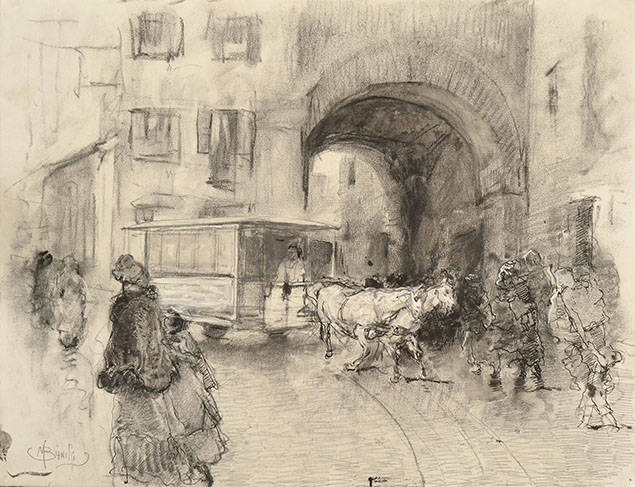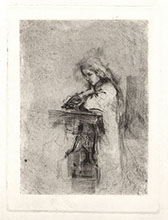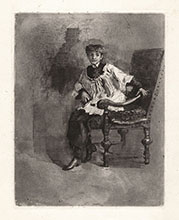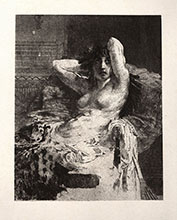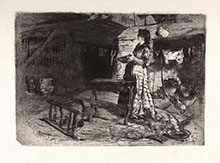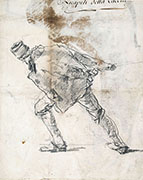(Monza 1840 - 1904)
PUSTERLA DEI FABBRI, MILAN
Black charcoal with stumping and washed, graphite, pen and black ink, heigthened with white; 375 x 495 mm. Signed in black chalk at bottom left MBianchi.
PROVENANCE: Bernasconi collection. Inscription on the verso, L.5374
The Pusterla dei Fabbri was one of the smaller gates on the medieval track of the Milan walls (here a few photographic images of it). It was located along the road of San Simone, about where today Via Cesare Correnti ends. The pusterla was demolished in 1900 to give room to real estate speculation, despite the fierce opposition of a group of Milanese intellectuals, including Luca Beltrami and Luigi Conconi. The remains of this old city gate are now at the Museum of Art in the Castello Sforzesco. The subject was replicated by Bianchi in his paintings. A painted version has been published by Biscottini in 1996, in his catalogo ragionato of the works by Bianchi (cat. no 555, with the title Tram a cavalli and dated circa 1888). Another painted version, even more precisely in relation to our drawing, is preserved at the Fondazione Balzan.
Mosè Bianchi enrolled at the Accademia di Belle Arti at the Brera, Milan, in 1856. In 1859 he temporarily abandoned his studies to fight in the second Italian War of Independence, returning to Milan to study under Giuseppe Bertini. Among his fellow students was Tranquillo Cremona, whose involvement with the Scapigliati later had an impact on Bianchi’s work. In 1862 Bianchi exhibited his first large-scale independently painting. He continued to exhibit regularly and in 1866 he was awarded the Pensionato Oggioni, which enabled him to visit Venice, Paris and Rome. During this period Bianchi met the artists Mariano Fortuny y Marsal and Ernest Meissonier, and the dealer Goupil, who inspired him to produce a series of 18th-century genre scenes. Eighteenth-century influences, especially the work of Giovanni Battista Tiepolo, were also important for his many fresco cycles. Bianchi continued to attract attention with his views of Chioggia and Milan, these frequently providing the background for genre scenes. He was also a sensitive portraitist and made etchings. Notwithstanding his intense activity and continued public success, Bianchi spent his final years in poverty, assisted by his nephew, the painter Pompeo Mariani.
